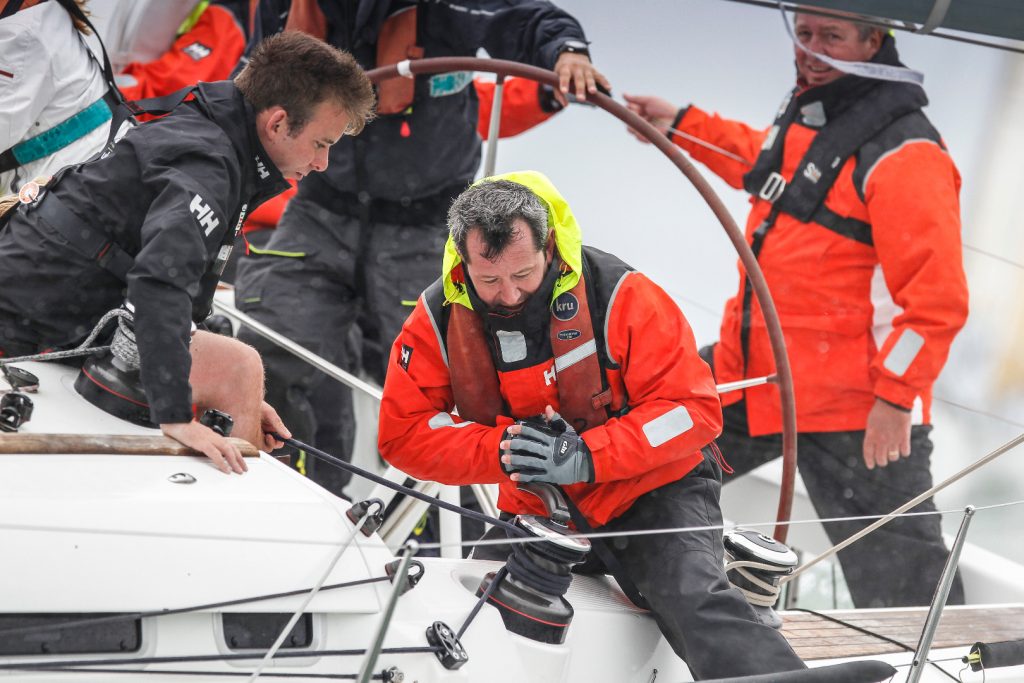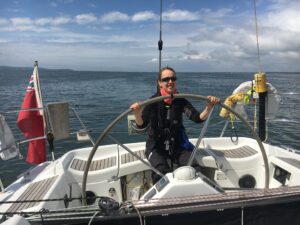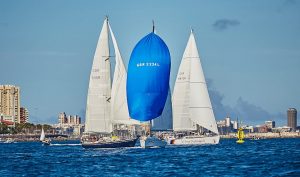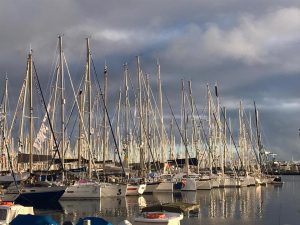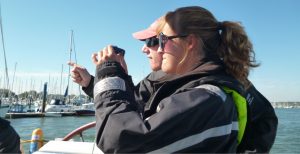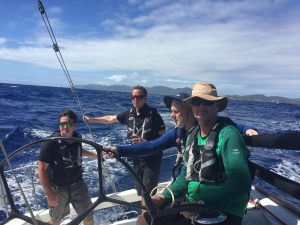1. Clear Roles and Responsibilities . You should define the crew roles and the responsibilities of each role. This will vary by boat depending on how may crew you have, obviously for 2 or 3 crew it will be very different to a crew of 10! You may even have different set ups – for light winds vs heavier winds, for inshore vs offshore racing. But if you know which role is responsible for what then this benefits you by
a) Reducing confusion. For example – when tacking, do you have one person cut and one person grind? Or does the cutter also tail for the grinder? Or is there a 3 rd person to tail? Or does the cutter then swap sides to grind with the other person simply pulling in the slack? When gybing – whose responsibility is it to ensure the sheet is unwound from the winch when swapping to the new sheet? You might think these are trivial elements, but for the people involved it is crucial. If they are working to a different pattern, then it can result in several people trying to do the same job or worse – no-one doing it!
b) Improving crew flexibility . By having fixed roles and responsibilities then if someone changes role, you know exactly how to brief them.
c) Aiding crew recruitment . For example – if you usually sail with 8 but only have a crew of 7, then once you have allocated the 7 crew to roles you can see what you are looking for – do you need to recruit someone good at trim, tactics or more muscle power, or perhaps you can see how to rejig your crew to accommodate someone new?
2. Stay in your own role. Try to stay within your role throughout each manoeuvre, as this will encourage a consistency of technique to develop. If everyone stays within their own role the gaps / overlaps can be identified, allocated and each crew member can then take accountability for their role and learn from any mistakes, try new techniques etc.
Even if a manoeuvre isn’t going to plan try to resist the urge to dash across the boat to help out or take over. It is important the person struggling learns what they did wrong, and therefore how to fix/avoid it – rather than having a rope etc wrenched from them and told to get out of the way. Encourage them to ask for help when needed, and don’t get involved until they ask. Also if you are involved in the manoeuvres, then leaving your post is likely to create further issues. If you have a crew member not involved in a manoeuvre – make sure they know they are on stand-by to help out in these situations, or are briefed to watch out for things likely to go wrong (riding turns, ‘bum cleats’ etc).

3. Execute manoeuvres only when ready and allow sufficient preparation time. It is better to do something slow and well, than fast and wrong. Perform manoeuvres at the best pace you can manage whilst getting it right, then practise to then bring the time down. If you try and execute it too fast because you think that’s how quickly it should be done you are likely to mess it up, put pressure on the crew, create fear and cause damage.
If that means dropping early, that is better than overshooting the mark!
4. Constructive Communication. Rarely is repeating instructions over and over, louder and louder welcomed or constructive. Make sure you know what the sequence of events is following one key trigger, minimise communication unless helpful. Also agree which words you are going to use – in windy conditions ‘No!’ and ‘Go!’ sound remarkably similar, and shouting ‘slack’ could mean you want slack or take-it up.
Hand signals are a great way to improve communication around the boat – swirling your index finger whilst pointing downwards (as though stirring a cup of tea) upwards means release, or with your finger pointing upwards means take-up. A thumbs-up is well recognised as ‘that’s good’!
Encourage crew to acknowledge communication with a thumbs up – especially useful when the skipper announces a change of hoist / drop technique and wants to be sure that the bow team have heard.

5. Train like you race and race like you train. Have you ever heard of a football team going to play a match without having a training session, or at least a pre-match warm up?! No – yet sailors often think they can just rock up and race. Your crew work will improve markedly with a day of training, and even a n extra hour before the start will ensure that your crew are ‘in the zone’, focussed and any little errors (such as a badly packed kite, or poorly tied knot) can be rectified.
